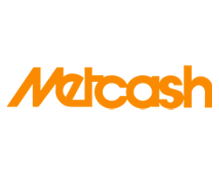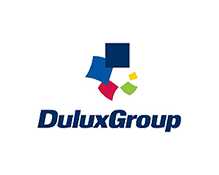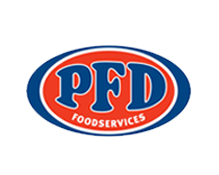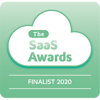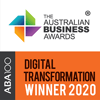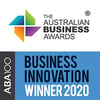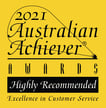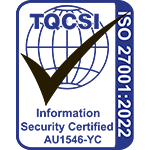What Is Dynamic Pricing and How to Implement It
What is dynamic pricing?
Dynamic pricing is a pricing strategy in which a company adjusts the price of a product or service based on various factors such as supply and demand, competition, and customer behavior. This strategy is often used by companies in industries such as airline, software, and retail.
Static Pricing vs Dynamic Pricing Systems
Dynamic pricing relies on the concept of price elasticity, which refers to the extent to which the demand for a product or service changes in response to a change in price. Companies that use dynamic pricing aim to optimize their prices based on the elasticity of demand, in order to maximize their profits.
Dynamic Pricing Tools
Dynamic pricing can be implemented through the use of algorithms, machine learning, and other techniques to analyze data and make real-time pricing decisions. In the case of subscription-based software, for example, dynamic pricing might involve adjusting the price of a subscription based on the number of users or the level of usage.
Dynamic Pricing Models
There are several different types of dynamic pricing models, but some of the most common ones are:
-
Demand-based pricing: This model adjusts prices based on the level of demand for a product or service. For example, an airline might charge higher prices for flights during peak travel periods when demand is high, and lower prices during off-peak times when demand is lower.
-
Competition-based pricing: This model adjusts prices based on the prices of similar products or services offered by competitors. For example, a retailer might adjust the price of a product based on the prices of similar products offered by other retailers in the market.
-
Customer-based pricing: This model adjusts prices based on the characteristics or behaviors of individual customers. For example, a company might offer a discount to a customer who has purchased from them in the past, or charge a higher price to a customer who is willing to pay more for a product or service.
-
Time-based pricing: This model adjusts prices based on the time of day, day of the week, or season. For example, a retailer might offer discounts on certain products during off-peak times, or an airline might charge higher prices for flights during peak travel periods.
-
Cost-plus pricing: This model sets prices based on the cost of producing a product or service, plus a markup to cover overhead and profit.
-
Bundle pricing: This model involves offering a group of products or services at a discounted price when purchased together as a bundle.
Industries that use Dynamic Pricing Models
Dynamic pricing is often used in B2B (business-to-business) and B2C (business-to-consumer) settings, and can be particularly effective for companies selling products or services with a high degree of price elasticity. In the case of B2B sales, dynamic pricing may involve offering customized pricing based on the specific needs of a customer, such as volume discounts or bundle pricing.
Demand Level, Inflated Prices And Customer Satisfaction
Overall, the goal of dynamic pricing is to optimize prices for a company's products or services in order to maximize profits, while also taking into account the needs and preferences of customers.
As with any type of strategy, there are pros and cons that must be taken into consideration before implementing it. Most notably, consumers have been vocal about potential abuses within a dynamic pricing structure for monopolistic companies taking advantage of those less aware about these practices; therefore an understanding of dynamic pricing and its effects are important considerations when thinking about adopting this strategy.
The Two Main Dynamic Pricing Methods
As you have seen above, there are many different types of dynamic pricing methodologies, but the two used most often are. Segmented pricing based on groups and time.
1. Dynamic Pricing Approach Based on Groups
Dynamic pricing based on segmenting groups entails categorising clients based on variables such as region, income, or historical purchase behaviour. Prices can then be adjusted based on the unique qualities or needs of each consumer segment.
For example, a corporation may offer reduced rates to customers in specific geographic areas or to those who have previously purchased from them, while charging higher prices to customers who are prepared to spend more or who are new to the company. By targeting different price points to distinct consumer categories, this method can help the organisation optimise prices and maximise profitability.
Customer segmentation can also assist a company in tailoring its marketing and sales activities to better satisfy the demands and preferences of various groups of customers. Understanding the individual features and habits of distinct consumer segments allows a company to design more successful focused marketing campaigns and sales tactics.
2. Dynamic Pricing Approach Based on Time
Time-based pricing can be effective in encouraging customers with varying needs and wants to purchase products at different times. For instance businesses may offer student discounts for particular days of the week or discounts for seniors during off-peak hours. By understanding customer needs businesses have an opportunity to develop dynamic pricing strategies that benefit both the company and their target demographic.
Dynamic pricing based on time has been around for years in industries such as taxis and retail. It enables companies to price their services and products based on the changing demands, which can range from peak hours to down times of the day. For example, taxi companies reduce fares during less busy periods such as late nights while they charge extra fees at rush hour. Retailers also use dynamic pricing to reduce the price of previous collections before introducing new collections, while delivery businesses may consider extra fees for same-day delivery. In general, this kind of dynamic pricing strategy benefits retailers, transportation enterprises, and delivery businesses alike.
Dynamic pricing advantages
One of the biggest advantages of dynamic pricing is the flexibility it provides businesses. Dynamic pricing enables them to adjust prices depending on market conditions, seasonality, and customer segmentation. This can be used to both raise and lower prices, assisting businesses in meeting target sales figures.
Moreover, by optimizing prices according to individual customers’ willingness to pay, businesses can provide customers with better value for money as well as a more personalized shopping experience. This in turn can lead to higher customer loyalty and improved brand equity. Additionally, dynamic pricing can also help business manage inventory costs by avoiding overstock and stockouts.
Maximise Profits Through Dynamic Pricing
As businesses look to stay competitive in a market that is ever-changing, they can often benefit from utilising a dynamic pricing strategy. This type of strategy adjusts prices to match what the customer wants to pay and can help maximize profits.
Create higher levels of demand
Businesses have long known the challenge of open seats and lost revenue. Therefore, discounts are often used to encourage greater demand. Offering lower prices during peak times can allow companies to maximize their profits from sales by filling more spots at a discounted rate. This is most commonly seen in industries such as hotels and the travel industry, but other industries have adopted this practice as well.
Allow pricing to reflect demand
Business owners should use dynamic pricing as a way to stay competitive in the changing season. Dynamic pricing is when sellers charge their customers different prices depending on the time of day they are shopping, and it can be a powerful tool to adjust costs according to demand.
Dynamic Rates in the Hotel Industry and Tourism Industry
Dynamic pricing works especially well in seasonal markets like fashion and hospitality, where lower costs during summer months can mean savings can be passed onto the customer. Then in winter, extra costs like lights and water increase, and dynamic pricing helps recoup these cost increases without negatively impacting customer experience. Allowing pricing to reflect demand will help give businesses better control over their cost structures while also providing customers with great value for money all year round.
Dynamic pricing disadvantages
Dynamic pricing, also known as surge pricing or variable pricing, has become increasingly prevalent in various industries, especially in online retail and the airline industry. While dynamic pricing can be a useful tool for maximizing profits, it can also lead to customer dissatisfaction if they feel that they are being overcharged compared to others.
To address this issue, it is important for companies to consider the concept of fair prices and strive to provide transparent and personalized pricing to their customers. This can involve using demand-based pricing, which adjusts prices based on the level of demand for a product or service, or offering personalized pricing based on the specific needs and preferences of individual customers.
In the airline industry, for example, dynamic pricing can be used to charge higher prices for flights during peak travel periods when demand is high, and lower prices during off-peak times when demand is lower. However, it is important for airlines to communicate clearly to customers about the factors that are driving price changes, in order to avoid alienating loyal customers and causing them to feel mistreated.
Lost sales from not having competitive pricing
For customers in the modern economy, using the internet to research products or services before buying them has become a commonplace activity. This means, if the price of a product is higher than expected, many customers will quickly search elsewhere for their purchase. As a result, neglecting the need for competitive prices can lead to lost sales.
In order to ensure they don't miss out on potential sales, businesses should constantly monitor how their prices compare against competitors and make adjustments accordingly. Regularly tracking customer sentiment is also key when setting prices-a slight reduction could generate more interest in product offerings and increasenumberof sales. It’s also important to remember that simply matching competitors’ prices isn’t always enough; businesses must strive to provide added value in order to stand out from competition.
Gaming the system
Online retailers have started to employ dynamic pricing models, meaning that the price of some items may vary from customer to customer depending on their browsing and purchase history. This advantage for businesses has led to savvy shoppers being wary of researching an item too much, lest it results in the price becoming higher than a person who did not shop around as much.
The concept has driven people to use private web browsers like those included in Firefox or Chrome, which perform searches without collecting information about you. These web browsers can also be incognito if a user is particularly paranoid, as they do not save cookies, browsing history, passwords or any other data associated with them after they are closed. Shopping through these browsers is a way for people to conduct research without creating more data points that can be used by businesses’ algorithms to raise prices on them specifically.
Price wars between businesses can lead to significant losses
When two businesses offer similar products, engaging in a “price war” becomes a tempting option. It involves one business significantly dropping their price, resulting in the other attempting to match it. This goes on until one of them is no longer able to sustain the decrease and decides to raise prices or risk bankruptcy. Grocery stores are a prime example of companies that commonly engage in price wars as they attempt to bring customers in with low prices.
The problem with this strategy is that it can be extremely costly for both businesses. In order to undercut their competitors, these companies must lower their cost of production by cutting staff, decreasing quality and reducing costs over time - all of which have been proven to result in financial losses for them and a lack of customer loyalty for their target customers. Furthermore, research has found that price wars are ultimately detrimental to the industry overall – as suppliers and retailers alike suffer from decreased profits due to such competitions.
Common Dynamic pricing examples
Ride-sharing services
Ridesharing businesses like Uber, Lyft and other ride-hailing services have increasingly taken advantage of dynamic pricing to maximize the supply and demand of drivers in their network. Dynamic pricing means that riders may pay different fares based on a variety of factors, such as peak hours when there is more demand than usual. According to some reports, these price increases can be around 20–30%, but they could potentially be much higher depending on the service’s algorithms.
Raising prices during peak hours can encourage more drivers to enter the market. Additionally, this type of pricing structure helps reduce wait times and provides customers with other options if they are unwilling to pay higher rates. As a result, many companies are taking advantage of dynamic pricing in order to maximize profits.
Airlines
When it comes to booking airline tickets, timing is key. Flight ticket prices can change substantially day-to-day, let alone season-to-season. How do airlines set prices? Multiple things affect this question. People who book flights months in advance expect lower costs when prices drop. Customers may not get the lowest price when ticket prices are modified. Business travellers typically take advantage of lesser tickets when other travellers cancel their travels last minute. While buying early used to be crucial to finding cheap plane tickets, being flexible now can land you the best offer.
BnBs and hotels
As BnB and hotel demand fluctuates due to seasonality or special events, owners are turning to dynamic pricing to maximise profits. Managers can target distinct consumer segments with predictive analytics and machine learning.
Dynamic pricing leverages historical data to predict demand. By letting hoteliers determine prices based on trends or projected bookings, operators maximise revenue and profits. In addition to dynamic pricing, hotels can boost revenue via flash sales and limited-time offers.
E-commerce stores
E-commerce stores have to be agile when it comes to ever-changing market conditions and consumer preferences. They also need to adjust their prices according to various factors, such as the market price, seasons, competitors and seasonal launches. Even internal efforts such as launching new collections or outlet season can affect the prices of ecommerce stores.
In times like these in 2021, business owners must devise pricing strategies that will keep their customers satisfied while also keeping costs low. That is why a meticulous analysis of the customer base is needed before deciding on any changes in pricing. But besides customer loyalty and satisfaction, businesses should also be mindful of other considerations such as profitability. To ensure maximum profitability for your store, examine all factors affecting your pricing strategy including production costs as well as competitor behaviors. This way you can better plan for any positive or negative changes in customer demand during different times of the year and make sure you remain profitable even when consumer interests fluctuate.
Is the dynamic pricing algorithm fair?
Our commerce-oriented society has always been founded on fairness. Companies challenge the ethics of personalised pricing, or modifying prices based on competition, demand, or time of purchase.
Sales performance can suggest if raising pricing will undermine customer trust. So long as overall sales performance is satisfactory, adopting a dynamic pricing model is unlikely to erode customer trust, according to MIT research. Dynamic pricing must be accountable and transparent to be competitive and just in marketplaces.
Consumers don't think so
Since its inception in 2011, variable price structures has been a feature of the ridesharing app Uber, and it has generated a slew of negative press. Initially viewed as a business model that capitalised on customers' lack of awareness or uncertainty about when rates changed, some experts projected that if the pattern continued, people would begin to boycott services like Uber.
Customers, however, are progressively becoming accustomed to dynamic pricing, according to studies published earlier this year by professors at Wharton and Boston University. Furthermore, they claimed that once customers understand how dynamic pricing works, they have a lower tolerance for annoyance than organisations that use traditional tactics such as discounts and loyalty programmes.
Their findings appear to imply that customers favour dynamic pricing when done correctly. In other words, the effectiveness of dynamic pricing is still strongly dependent on how successfully corporations use their understanding of the method to adapt goods and services to specific users.
How to Implement Dynamic Pricing Using Dynamic Pricing Software
First, evaluate the possibilities for dynamic pricing in your industry. Are there any existing regulations that could restrict or limit these options? Have competitors implemented similar strategies successfully? Look at competitor prices at different times of the year. Do you have the necessary data systems required to identify the price elasticity of each of your product lines? Do you need to consult industry experts?
When creating your strategy for implementing dynamic pricing, consider how it will impact customer loyalty, customer acquisition, and customer retention. Does this model work well with your existing launch and value models? Are there any consumer protection laws that could prevent you from executing your plan?
Finally, take time to review all of the available options and make an informed decision about which type of dynamic pricing is best for your business and customers. Make sure each step works with other aspects of the customer journey and offers a good value proposition that will not only bring in new customers but also keep them coming back.
1. Price Differentiation - Two prices are better than one
Price differentiation is a popular pricing strategy that could be used by businesses to optimize their profits while taking into account the different financial situations of customers. This way of determining prices requires businesses to charge different prices for the same product or service depending on who is buying it.
The idea behind price differentiation is to set more than one price point for the same good or service, thus making it accessible to as broad an audience as possible without sacrificing profitability. Using this tactic, businesses are able to provide concessions to customers with lower incomes and still remain profitable when catering towards higher-income customers willing to pay more.
Using price differentiation allows businesses to compete in markets where one fixed price cannot compete against the range of needs that potential customers might have, making it a more effective pricing strategy than sticking with a single offering bound by one cost structure.
2. Ensure you're using a proper value metric
Using value measurements when pricing products and services is critical. Based on consumer input, market potential, and competitive variables, value metrics assess the worth of a product or service. Physical goods are more difficult to price than internet services since there is so much more to consider.
To truly comprehend the value metric for your physical object, divide it into its constituent parts and calculate each one separately. For example, if you were selling an air conditioning system, you could weigh the cost of energy-efficient operating against cheaper installation costs—and vice versa—to arrive at an accurate valuation. Calculating your value metric will be lot easier if you break down the difficult pieces into smaller bits.
3. Utilize Time in an auction type model
The idea behind a time-based auction type model is that buyers are incentivized with discounted prices and other offers if they purchase the product or service closer to the date of delivery. For example, tour operators can price different activities differently depending on how close they are booked to the actual date of arrival. In this kind of model, hoteliers can put their room inventory up for sale in real-time and adjust pricing based on how far ahead travelers book their stay, thus optimizing revenue while accounting for changing consumer tastes and market conditions.
4. Couponing and Discounts
Couponing and discounts can be a powerful way to engage with customers and provide them with a dynamic price. Using different promotions and coupons, you can use discounts to give new customers an incentive to purchase, reward loyal customers and convert more leads.
Coupons are particularly useful for online services. This provides users of your service the incentive to buy without sacrificing their own finances. However, over usage of coupons and discounts can negatively affect your brand’s perception if customers begin to assume that these prices are the regular or typical prices for your products or services. You should carefully evaluate how and when you offer these price drops in order to ensure that they support rather than detract from your overall pricing strategy.
AI-Driven Dynamic Pricing Engine
ADDITIONAL TOPICS COVERED
Amazon,restaurants,first app,dynamic prices,licensing guide,major league baseball,subsequent pricing wouldn,dynamic pricing algorithms,demand pricing,subsequent pricing,digital menus,algorithmic pricing,high demand,commercial objective,pricing rules,market demand,product prices,map,springsteen,alue-based pricing,differential pricing,surge-pricing,time-based-pricing,penetration,omnichannel,dynamic-pricing,purchase patterns,road pricing,price sensitivities,media,margin,grow,know,insights,advanced,digital,technology,solutions,process,growth,personal,leaders,australia,partners,world,track,brands,success,articles,topics,commercial,cloud,study,likely,amount,sell,place.
Pricing,prices,dynamic pricing,strategy,sales,company,customer,elasticity,customers,b2b,pricing strategy,software,airline,price elasticity,price discrimination,saas,retailers,machine learning,subscription,variable pricing,algorithms,goal,time-based pricing,bundle,cost-plus pricing,entrepreneurs,online marketing,salesman.
DYNAMIC PRICING REFERENCES
pricing prices dynamic pricing strategy sales company customer elasticity customers b2b pricing strategy software airline price elasticity price discrimination saas retailers machine learning subscription variable pricing algorithms goal time-based pricing bundle cost-plus pricing entrepreneurs online marketing salesman
Given that a 1% increase in price can deliver a disproportionate increase in margin, it's critical for businesses to optimise their pricing – particularly in low growth countries where opportunities for revenue and market share growth are limited. Research shows that by aggregating, overlaying, and analysing various data sets - including sales, market intelligence, competitor information, and more – organisations can effectively optimise pricing and margin. The problem however, is the amount of data analysis that's required.
As an example, imagine stocking 10,000 different SKUs for 10,000 different customers, and trying to determine a margin-optimised price for each individual SKUs for for each individual customer. It’s an impossible task without the use of sophisticated technology. Despite the inherent difficulty of this analysis, pricing that is individualised or based on specific customer segments (rather than "one-size-fits-all" strategies) can significantly improve financial performance.
Complexica’s Order Management System (OMS) can dynamically determine margin-optimised pricing for each product and customer (adjusted for volume and geography). Sales staff are provided with dynamic “price guides” during the quoting and order taking process, so they can maximise margin and the odds of winning the business. Our Order Management System (OMS) is a module of Decision Cloud® and relies on a variety of elasticity and cross-elasticity algorithms, as well as sophisticated machine learning techniques to understand buying behaviour and pricing, before recommending the right product to the right customer at the right price.
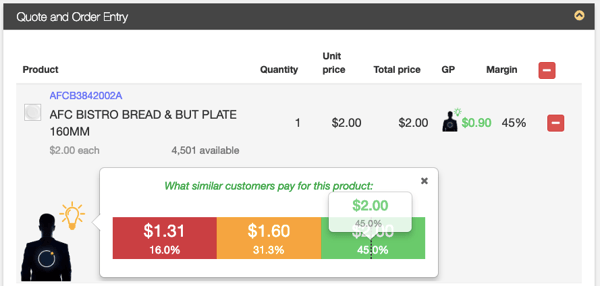
To explore how Complexica's Order Management System (OMS) can help you generate "margin-optimised" quotes and orders within call centres, in-field selling environments, and e-commerce portals, please contact us.
"Larry will be our digital expert that will enable our sales team and add that technological advantage that our competitors don't have."
Kerry Smith
CEO, PFD Foods
$1.6 billion in revenue 
"Lion is one of Australasia’s largest food and beverage companies, supplying various alcohol products to wholesalers and retailers, and running multiple and frequent trade promotions throughout the year. The creation of promotional plans is a complicated task that requires considerable expertise and effort, and is an area where improved decision-making has the potential to positively impact the sales growth of various Lion products and product categories. Given Complexica’s world-class prediction and optimisation capabilities, award-winning software applications, and significant customer base in the food and alcohol industry, we have selected Complexica as our vendor of choice for trade promotion optimisation."
Mark Powell
National Sales Director, Lion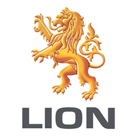
"At Liquor Barons we have an entrepreneurial mindset and are proud of being proactive rather than reactive in our approach to delivering the best possible customer service, which includes our premier liquor loyalty program and consumer-driven marketing. Given Complexica’s expertise in the Liquor industry, and significant customer base on both the retail and supplier side, we chose Complexica's Promotional Campaign Manager for digitalizing our spreadsheet-based approach for promotion planning, range management, and supplier portal access, which in turn will lift the sophistication of our key marketing processes."
Richard Verney
Marketing Manager
Liquor Barons

"Dulux is a leading marketer and manufacturer of some of Australia’s most recognised paint brands. The Dulux Retail sales team manage a diverse portfolio of products and the execution of our sales and marketing activity within both large, medium and small format home improvement retail stores. We consistently challenge ourselves to innovate and grow and to create greater value for our customers and the end consumer. Given the rise and application of Artificial Intelligence in recent times, we have partnered with Complexica to help us identify the right insight at the right time to improve our focus, decision making, execution, and value creation."
Jay Bedford
National Retail Sales Manager
Dulux

"Following a successful proof-of-concept earlier this year, we have selected Complexica as our vendor of choice for standardizing and optimising our promotional planning activities. Complexica’s Promotional Campaign Manager will provide us with a cloud-based platform for automating and optimising promotional planning for more than 2,700 stores, leading to improved decision-making, promotional effectiveness, and financial outcomes for our retail stores."
Rod Pritchard
Interim CEO, Metcash - Australian Liquor Marketers
$3.4 billion in revenue 
"After evaluating a number of software applications and vendors available on the market, we have decided to partner with Complexica for sales force optimisation and automation. We have found Complexica’s applications to be best suited for our extensive SKU range and large set of customers, being capable of generating recommendations and insights without burdening our sales staff with endless data analysis and interpretation.
Aemel Nordin
Managing Director, Polyaire
"DuluxGroup is pleased to expand its relationship with Complexica, a valued strategic partner and supplier to our business. Complexica’s software will enable DuluxGroup to reduce the amount of time required to generate usable insights, increase our campaign automation capability, personalise our communications based on core metrics, and close the loop on sales results to optimise ongoing digital marketing activity."
James Jones
Group Head of CRM, DuluxGroup
"Instead of hiring hundreds of data scientists to churn through endless sets of data to provide PFD with customer-specific insights and personalised recommendations, Larry, the Digital Analyst® will serve up the answers we need, when we need them, on a fully automated basis without the time and manual processes typically associated with complex analytical tasks.”
Richard Cohen
CIO, PFD Foods
$1.6 billion in revenue 
"As a global innovator in the wine industry, Pernod Ricard Winemakers is always seeking ways to gain efficiencies and best practices across our operational sites. Given the rise of Artificial Intelligence and big data analytics in recent times, we have engaged Complexica to explore how we can achieve a best-in-class wine supply chain using their cloud-based software applications. The engagement is focused on Australia & New Zealand, with a view to expand globally."
Brett McKinnon
Global Operations Director, Pernod Ricard Winemakers
"70% - 80% of what we do is about promotional activity, promotional pricing -- essentially what we take to the marketplace. This is one of the most comprehensive, most complex, one of the most difficult aspect of our business to get right. With Complexica, we will be best in class - there will not be anybody in the market that can perform this task more effectively or more efficiently than we can."
Doug Misener
CEO, Liquor Marketing Group
1,400+ retail stores 
"The key thing that makes such a difference in working with Complexica is their focus on delivering the business benefits and outcomes of the project."
Doug Misener
CEO, Liquor Marketing Group
1,400+ retail stores 
"Australia needs smart technology and people, and it has been a great experience for me to observe Complexica co-founders Zbigniew and Matt Michalewicz assemble great teams of people using their mathematical, logic, programming, and business skills to create world-beating products. They are leaders in taking our bright graduates and forging them into the businesses of the future."
Lewis Owens
Chairman of the Board, SA Water 
"Having known the team behind Complexica for some years ago now, I am struck by their ability to make the complex simple - to use data and all its possibilities for useful purpose. They bring real intelligence to AI and have an commercial approach to its application."
Andrew McEvoy
Managing Director, Fairfax Media - Digital 
"I have worked with the team at Complexica for a number of years and have found them professional, innovative and have appreciated their partnership approach to delivering solutions to complex problems."
Kelvin McGrath
CIO, Asciano 
“Working with Complexica to deliver Project Automate has been a true partnership from the initial stages of analysis of LMG’s existing processes and data handling, through scoping and development phase and onto delivery and process change adoption. The Complexica team have delivered considerable value at each stage and will continue to be a valued partner to LMG."
Gavin Saunders
CFO, Liquor Marketing Group 
“Complexica’s Order Management System and Larry, the Digital Analyst will provide more than 300 Bunzl account managers with real-time analytics and insights, to empower decision making and enhanced support. This will create more time for our teams to enable them to see more customers each day and provide the Bunzl personalised experience.”
Kim Hetherington
CEO, Bunzl Australasia 
"The team behind Complexica develops software products that are at the cutting edge of science and technology, always focused on the opportunities to deliver a decisive competitive edge to business. It has always been a great experience collaborating with Matthew, Zbigniew and Co."
Mike Lomman
GM Demand Chain, Roy Hill Iron Ore 
"The innovations that the Complexica team are capable of continue to amaze me. They look at problems from the client side and use a unique approach to collaborating with and deeply understanding their customers challenges. This uniquely differentiates what they bring to market and how they deliver value to customers."
John Ansley
CIO, Toll Group 
"Rather than building out an internal analytics team to investigate and analyse countless data sets, we have partnered with Complexica to provide our sales reps with the answers they need, when they need them, on a fully automated basis. We are excited about the benefits that Larry, the Digital Analyst will deliver to our business.”
Peter Caughey
CEO, Coventry Group 
“Complexica’s Order Management System and Larry, the Digital Analyst will provide more than 300 Bunzl account managers with real-time analytics and insights, to empower decision making and enhanced support. This will create more time for our teams to enable them to see more customers each day and provide the Bunzl personalised experience.”
Kim Hetherington
CEO, Bunzl Australasia 
"After an evaluation process and successful proof-of-concept in 2016, we have chosen to partner with Complexica to upgrade the technological capability of our in-field sales force. The next-generation Customer Opportunity Profiler provided by Complexica will serve as a key tool for sales staff to optimise their daily activities, personalise conversations and interactions with customers, and analyse data to generate actionable insights."
Stephen Mooney
Group Sales Capability Manager, DuluxGroup
$1.7 billion in revenue
"After evaluating a number of software systems available in the marketplace, we have ultimately selected Complexica as our vendor of choice for sales force automation and CRM. Given the large SKU range we carry and very long tail of customers we serve, Complexica’s applications are best suited to deal with this inherent complexity without burdening our staff with endless data entry."
Nick Carr
CEO, Haircaire Australia
Australia's largest distributor of haircare products
“Asahi Beverages is Australia’s largest brewer, supplying a leading portfolio to wholesalers and retailers, including some of Australia’s most iconic brands. Last year Asahi Beverages acquired Carlton & United Breweries, which is its Australian alcohol business division. To harness the strength of our expanded portfolio, we partner with our customers to run multiple and frequent trade promotions throughout the year, delivering long-term growth for both our business and theirs. Given the inherent complexity in optimising promotional plans and our continued focus on revenue and growth management, we have selected Complexica as our vendor of choice after a successful Proof-of-Concept of its world-class optimisation capabilities.”
Kellie Barnes
Group Chief Information Officer
Asahi Beverages
"Dulux is a leading marketer and manufacturer of some of Australia’s most recognised paint brands. The Dulux Retail sales team manage a diverse portfolio of products and the execution of our sales and marketing activity within both large, medium and small format home improvement retail stores. We consistently challenge ourselves to innovate and grow and to create greater value for our customers and the end consumer. Given the rise and application of Artificial Intelligence in recent times, we have partnered with Complexica to help us identify the right insight at the right time to improve our focus, decision making, execution, and value creation."
Jay Bedford
National Retail Sales Manager, DuluxGroup
"At Liquor Barons we have an entrepreneurial mindset and are proud of being proactive rather than reactive in our approach to delivering the best possible customer service, which includes our premier liquor loyalty program and consumer-driven marketing. Given Complexica’s expertise in the Liquor industry, and significant customer base on both the retail and supplier side, we chose Complexica's Promotional Campaign Manager for digitalizing our spreadsheet-based approach for promotion planning, range management, and supplier portal access, which in turn will lift the sophistication of our key marketing processes."
Richard Verney
Marketing Manager, Liquor Barons





